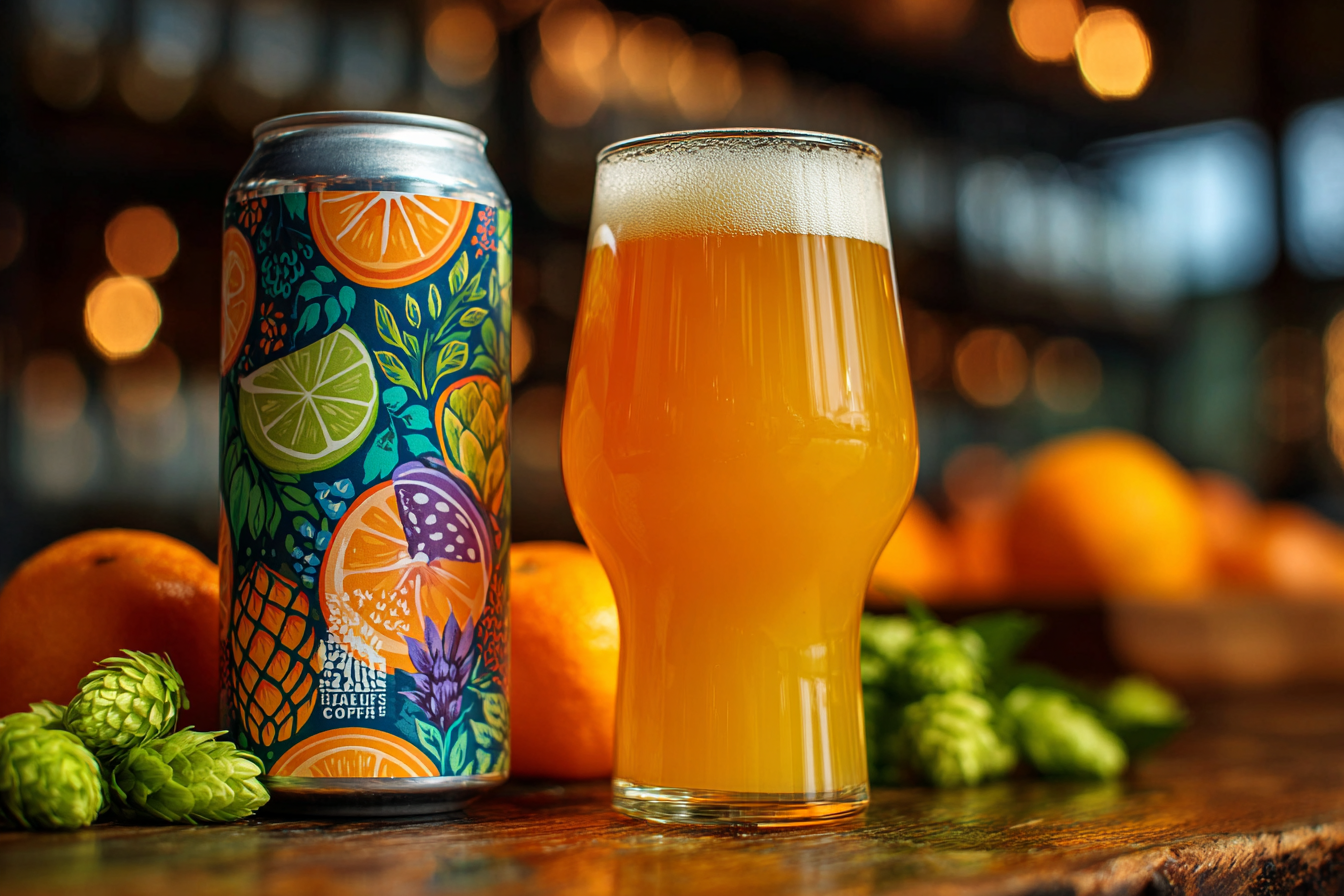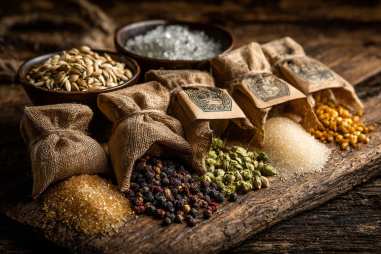New England IPA, often affectionately called NEIPA or Hazy IPA, has taken the craft beer world by storm with its unique and inviting flavor profile. Unlike traditional IPAs, which tend to showcase sharp bitterness and clarity, New England IPAs are known for their juicy, fruity flavors, smooth bitterness, and that iconic hazy appearance. But what exactly creates this distinctive drinking experience? Let’s dive deeper into the elements that make the flavor profile of New England IPA so special and beloved by beer enthusiasts everywhere.
Introduction to New England IPA Flavor Characteristics
When you take a sip of a New England IPA, the first thing that may strike you is its luscious fruitiness paired with a creamy texture. This style is characterized by a soft, pillowy mouthfeel and a flavor profile that leans heavily into tropical and citrus fruit notes rather than the piney, resinous qualities found in more classic IPAs. Instead of the drying, lingering bitterness commonly associated with many IPAs, NEIPAs often offer a gentle bitterness that complements the sweetness from malt and hops. This harmonious combination results in an easy-drinking yet flavor-packed beer that has captivated many fans of the style.
The Role of Hop Varieties in Flavor and Aroma
Hops are unquestionably the starring ingredient when it comes to New England IPAs. Unlike traditional IPAs that may emphasize bitterness, NEIPAs focus on hop varieties that deliver intense aroma and flavor without harsh bitterness. Brewers typically use late hop additions, dry hopping, and hop bursting to maximize aromatic oils while minimizing alpha acids that contribute to bitterness.
Some of the most popular hop varieties include:
- Citra: Bursting with citrus, lime, and tropical fruit flavors.
- Mosaic: Known for its complex profile of berries, tropical fruits, and herbs.
- Galaxy: Brings notes of passion fruit, peach, and citrus zest.
- Amarillo: Adds floral, orange, and stone fruit aromas.
- Simcoe: Offers pine, earthiness, and fruity aromas like apricot.
The combination and generous use of these hops at various stages in brewing results in that signature juicy, tropical explosion that defines the NEIPA flavor profile.
Malt Base Contributions to Sweetness and Body
While hops grab much of the attention, the malt base plays an essential supporting role in balancing the beer’s flavor. New England IPAs typically use a malt bill designed to provide a slightly sweet backbone and a fuller body. Pale malts coupled with adjuncts such as oats and wheat are commonplace. Oats especially contribute to the creamy mouthfeel and hazy appearance.
The sweetness from the malt balances the juicy hop flavors and rounds off the edges of bitterness, helping the beer stay drinking-friendly and approachable. Unlike IPA styles that emphasize dryness, the malt in NEIPAs helps retain a smooth and almost dessert-like quality that beer lovers find irresistible.
Yeast Strains and Their Flavor Impact
Yeast also has an important influence on the final flavor profile of a New England IPA. Many brewers use English ale yeast strains or hybrid strains that produce subtle fruity esters and can enhance the hazy appearance. These yeast strains often contribute flavors reminiscent of tropical fruit, stone fruit, and sometimes even subtle spices.
The yeast fermentation also interacts with the sugars from malt to create a balanced body and mouthfeel. It tends to leave some residual sweetness, which further complements the juicy hop character and maintains a smooth drinking experience.
Mouthfeel and Bitterness Balance
One of the defining features that sets New England IPA apart is its soft and creamy mouthfeel. The use of oats and wheat, combined with specific yeast strains and less aggressive hopping techniques, results in a beer that feels almost silky on the palate. This texture enhances the overall experience, making each sip feel lush and satisfying.
In terms of bitterness, NEIPAs hover on the lower to moderate end of the scale, typically ranging from 30 to 50 IBUs (International Bitterness Units). This is noticeably less bitter than West Coast IPAs, which often push 60-80 IBUs or more. The lower bitterness allows the hop aromatics and malt sweetness to shine rather than being overshadowed by sharpness or dryness.
Common Flavor Descriptors: Juicy, Tropical, Creamy
When describing a New England IPA, certain flavor and texture terms consistently emerge:
- Juicy: Intense tropical fruit flavors like mango, pineapple, and passionfruit dominate.
- Tropical: Citrusy notes such as orange, tangerine, and grapefruit along with exotic fruits.
- Creamy: A smooth, lush mouthfeel thanks to oats and wheat malt.
- Hazy: Visually cloudy, which also hints at unfiltered juiciness and texture.
- Low bitterness: Balanced bitterness that supports rather than overwhelms flavors.
These descriptors collectively evoke a refreshing and approachable beer style that appeals to both IPA newcomers and seasoned drinkers looking for complexity without intense bitterness.
How Brewing Techniques Influence Flavor
The brewing process behind New England IPA is just as key to its distinct profile as the ingredients themselves. Brewers use several techniques that maximize hop flavor and aroma while preserving a smooth body:
- Late hop additions and whirlpool hopping: Adding hops late in the boil or during whirlpool stages extracts essential oils responsible for flavor and aroma without imparting excessive bitterness.
- Dry hopping: Adding hops after fermentation is near completion allows volatile oils to infuse aroma with minimal bitter impact.
- Gentle filtration or no filtration: Helps retain proteins and yeast, contributing to haze and mouthfeel.
- Oat and wheat utilization: These grains increase body, haze, and create that creamy texture NEIPA is celebrated for.
- Short fermentation periods with specific yeast strains: Encourages fruity and estery fermentation characteristics that enrich flavors.
Each of these steps helps shape the final product, enhancing the juicy, aromatic, and approachable qualities that make New England IPAs stand out.
Pairing New England IPA with Food
The multifaceted flavor profile of New England IPA makes it a fantastic companion to a wide range of foods. Its fruity hop character and moderate bitterness can cut through rich dishes while complementing spicy and savory flavors. Some excellent pairings include:
- Spicy cuisines: Indian, Thai, and Mexican dishes pair beautifully thanks to the refreshing fruitiness and moderate bitterness that tame spice heat.
- Grilled seafood: The tropical notes match well with grilled shrimp, salmon, or fish tacos.
- Cheese boards: Soft cheeses like Brie or Camembert and mild blue cheeses pair nicely with NEIPA’s creamy mouthfeel.
- Fried foods: The bubbles and fruity brightness balance the richness of fried chicken or tempura.
- Salads with citrus dressings: The citrus hop profiles echo and enhance fresh, tangy salads.
Whether you’re hosting a barbecue or enjoying a casual meal, a New England IPA can elevate your dining experience with its lively flavor dynamics.
Grasping the Unique Flavor Journey of New England IPA
The New England IPA is a truly fascinating beer style that defies traditional IPA expectations. By focusing on juicy tropical fruit flavors, a smooth yet creamy mouthfeel, and restrained bitterness, it offers a refreshing alternative for those who may find other IPAs too harsh or bitter. With the careful selection of aromatic hops, malt sweetness, thoughtful yeast selection, and unique brewing methods, this style has crafted its own devoted following within the craft beer community.
Understanding the intricate layers that contribute to the New England IPA’s flavor profile enhances the enjoyment of each glass. Whether you’re a seasoned IPA connoisseur or new to hop-forward beers, exploring this style opens up a flavorful world of juicy, hazy, and downright delicious beer experiences.







